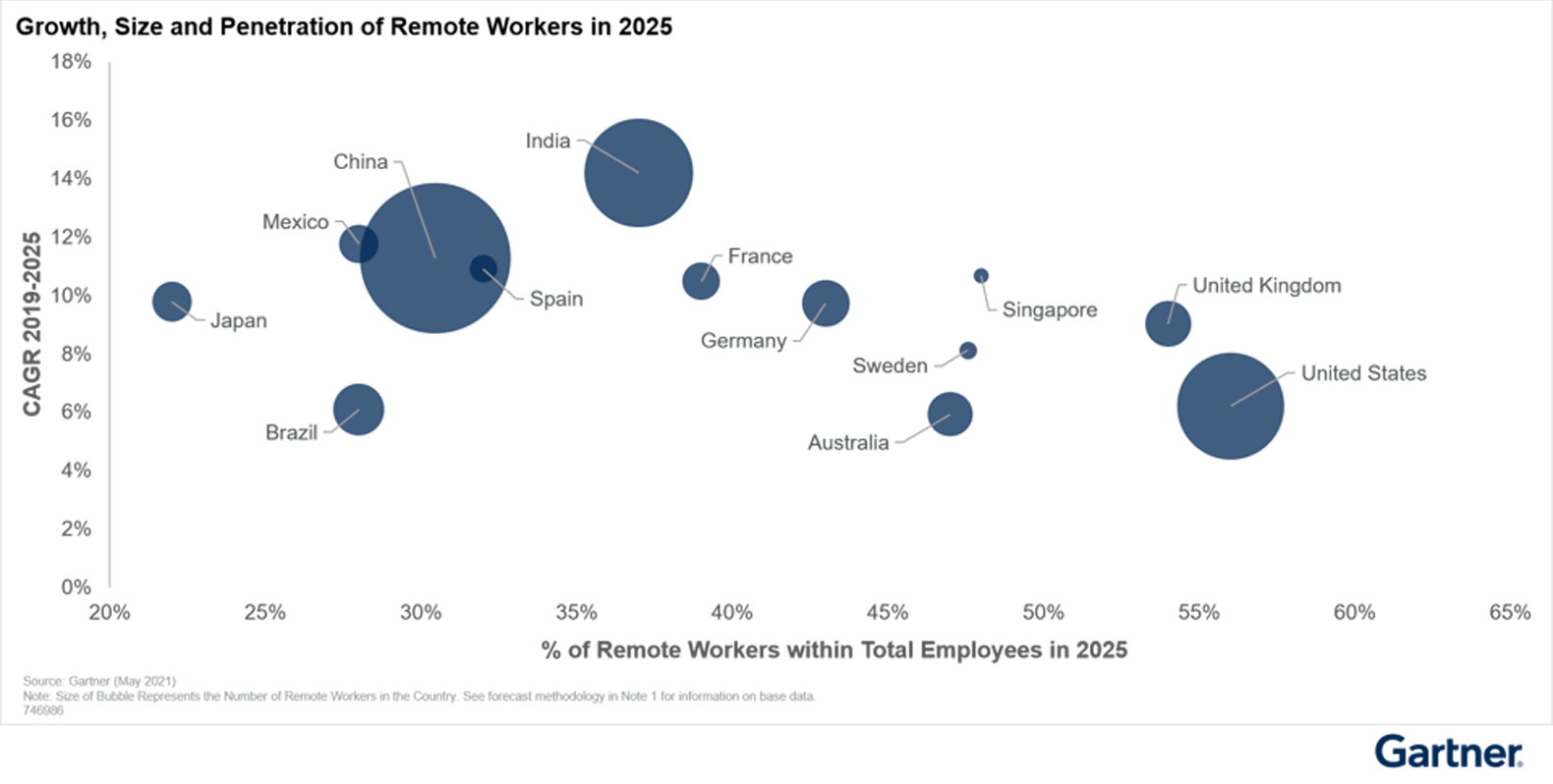In 2021, Remote Work Will Drive PC and Tablet Shipments to Over 500 Million Units for the First Time Ever
By the end of 2021, 51% of all knowledge workers worldwide are expected to be working remotely, up from 27% of knowledge workers in 2019, according to Gartner, Inc.
Gartner also estimates that remote workers will represent 32% of all employees worldwide by the end of 2021. This is up from 17% of employees in 2019. Gartner defines knowledge workers are those who are involved in knowledge-intensive occupations, such as writers, accountants, or engineers. Gartner defines a remote worker as an employee working away from their company, government, or customer site at least one full day a week (hybrid workers) or who work fully from home (fully remote workers).
“A hybrid workforce is the future of the work, with both remote and on-site part of the same solution to optimize employers’ workforce needs,” said Ranjit Atwal, senior research director at Gartner.
Remote working varies considerably around the world depending on IT adoption, culture, and mix of industries. In 2022, 31% of all workers worldwide will be remote (a mix of hybrid and fully remote). The U.S. will lead in terms of remote workers in 2022, accounting for 53% of the U.S. workforce. Across Europe, U.K. remote workers will represent 52% of its workforce in 2022, while remote workers in Germany and France will account for 37% and 33%, respectively.
India and China will produce some of the largest numbers of remote workers, but their overall penetration rates will remain relatively low with 30% of workers in India being remote and 28% of workers in China working remote.
Impact on How IT Is Procured and Used Through 2024
The lasting impact of remote work is resulting in a reassessment of the IT infrastructure that shifts buyer requirements to demand work-anywhere capabilities. “Through 2024, organizations will be forced to bring forward digital business transformation plans by at least five years. Those plans will have to adapt to a post-COVID-19 world that involves permanently higher adoption of remote work and digital touchpoints,” said Mr. Atwal.Digital products and services will play a big role in these digital transformation efforts. This longer strategic plan requires continued investment in strategic remote-first technology continuity implementations along with new technologies such as hyperautomation, AI and collaboration technologies to open up more flexibility of location choice in job roles.

A hybrid workforce will continue to increase the demand for PCs and tablets. In 2021, PC and tablet shipments will exceed 500 million units for the first time in history, highlighting the demand across both business and consumer markets.
Organizations also deployed cloud to quickly enable remote workers. Gartner forecasts worldwide end-user spending on public cloud services will grow 23.1% in 2021 as CIOs and IT leaders continue to prioritize cloud-delivered applications, such as software as a service (SaaS). SaaS applications are designed for remote access and aren’t constrained by the location of the workers using the application. Social and collaboration tools will continue to be a “must have” which will lead the worldwide social software and collaboration revenue market to increase 17.1% in 2021.
In terms of connectivity, many organizations had to change and adapt many IT approaches to ensure business continuity among their remote workers. By 2024, at least 40% of all remote access usage will be served predominantly by zero trust network access (ZTNA), up from less than 5% at the end of 2020. While most of these organizations will not completely retire all their client-facing VPN services, ZTNA will become the primary replacement technology.
Gartner clients can read more in “Forecast Analysis: Remote and Hybrid Workers, Worldwide.”
Learn how to make faster, smarter decisions – and generate stronger performance – by reinventing where, when and how work is done in the Gartner Future of Work Resource Center.
